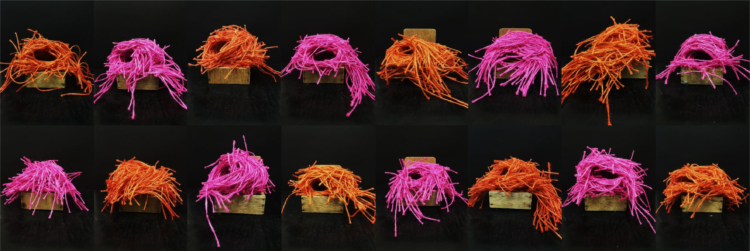Nest-building style reflects birds’ early experience

How birds build their first nest depends on the environment in which they grew up, according to new research from St Andrews.
Just like humans, birds appear to pick up tips from their parents, suggests the study published today in Behavioral Ecology.
The study examined key aspects of first-time nest building in zebra finches: material preference and construction speed.
Lead researcher Dr Alexis Breen, of the School of Biology at the University of St Andrews, said: “Which environmental ‘ingredients’ are needed, and when, for animals to acquire technological know-how is a major outstanding question.
“Establishing links between the early-life environment and one of the most widespread forms of animal material technology, nest building in birds, was therefore very exciting.”
To establish such links, researchers carefully controlled the environment of developing zebra finches.

Each bird hatched into a nest of one colour and, after fledgling from the nest as a juvenile, each bird was ‘buddied up’ with another juvenile. However, different juvenile pairs experienced different things: some were given an unrelated adult group mate or material of a different colour to the nest in which they hatched, or both or neither.
Project leader and co-author Dr Lauren Guillette, of both the University of St Andrews and the University of Alberta, added: “By manipulating their juvenile socio-ecological environment, we could test if, as a consequence, zebra finches built their first nest differently.
“Using different material colours allowed us to also determine if birds model their choice of nesting material on the nest experienced as a chick or on the material they encountered as a juvenile, after leaving their nest.”
The juvenile period was more important: most birds that had juvenile access to material preferred this colour of material for their first nest but, importantly, only if they had also had an adult group mate.
Dr Breen added: “Together these results show that juvenile zebra finches combine relevant social and ecological cues – here, adult presence and material colour – when developing their material preference.”
Differences in the speed at which birds built their first nest were also triggered interactively by juvenile social and ecological cues: birds that had not had juvenile access to an adult or material were between three and four times slower at nest building, depending on the building stage, compared to the birds given juvenile access to an adult and/or material.
Dr Guillette added: “That’s a considerable reduction in speed.”
Category Research